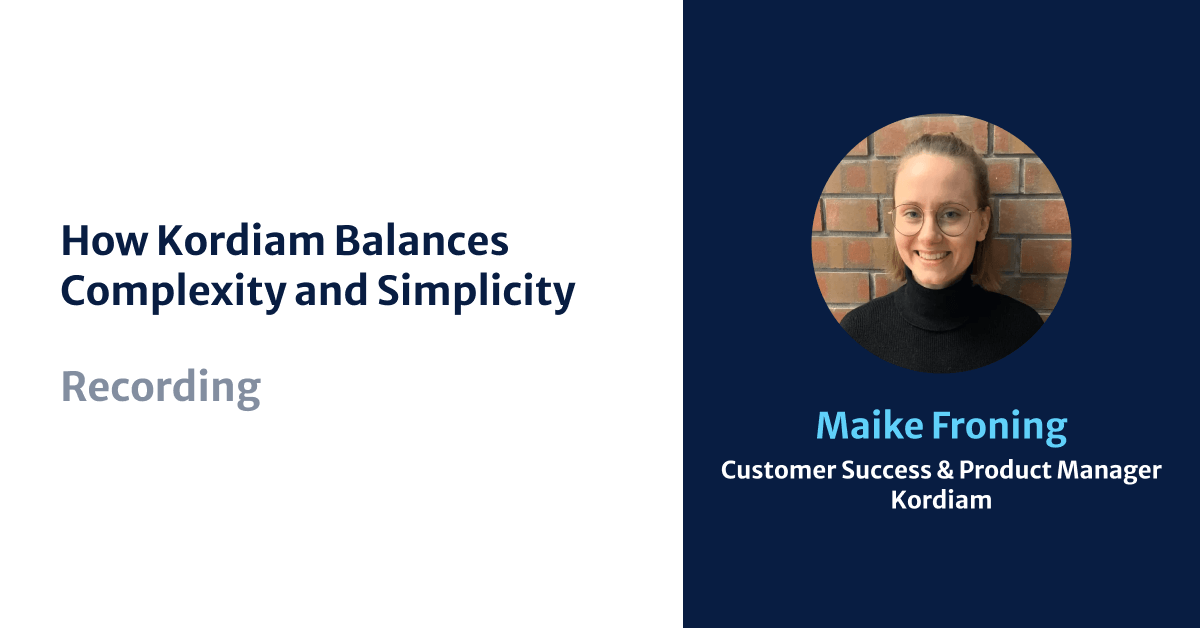Balancing Complexity and Simplicity in Editorial Workflows
As editorial workflows grow more complex, teams still need simple, streamlined tools to manage them effectively. Editors rely on detailed content planning data, while reporters want to quickly input updates and move on. Kordiam is built to meet both needs, surfacing complexity when it’s helpful, and staying out of the way when it’s not.
At Editorial Days 2025, Maike Froning, Product Manager at Kordiam, presented how Kordiam balances complexity and simplicity to support the real-world demands of modern newsrooms.
The Story Card Redesign
Maike's presentation centered on the redesign of Kordiam's Story Card. The new design maintains the familiar three-part structure:
- What’s the story about?
- What needs to be done?
- Which platforms are involved?
What changes is how that information is displayed. The new story card is more compact, structured, and clear.
Another improvement is better visibility of task–platform relationships. Previously, users had to check the platform level to see which tasks were linked to each platform. In the new design, those links are visible and editable directly at the task level.
The redesign also introduces a context box on the right side. This box gathers supporting information, such as update history, maps, content previews, and attachments, in one place without requiring new tabs or separate pages.
To keep complexity under control, empty fields are hidden by default, and users can choose to show more detail only when needed.
The new story card is already available on Kordiam’s demo server for testing, though some functions are still being refined. Both the old and new story cards will be available in parallel to ease the transition.
Future Improvements
Maike also outlined several planned features:
- Auto-refresh and interim save: To minimize data conflicts when several people collaborate on a story we will introduce an auto-refresh feature will provide real-time updates without overwriting any entries. We have already introduced an interim save button in the short term.
- Parent–child relationships: Users can organize stories, search for related content, and eliminate duplicates earlier in the writing process.
- AI-supported data extraction: When emails are linked to a story, AI can pull out important details, like locations or summaries, and add them directly to the story card.
Story Templates for Reporters
For reporters and content creators, Kordiam is developing story templates. These templates are designed to be:
- Minimalistic, reducing complexity as much as possible
- Group-specific, tailored to different team needs
- Customizable with selected fields, mandatory fields, and preset tasks
Templates can vary from basic ones that only need a description to more complex versions that include required fields and predefined tasks, such as uploading a photo. Their purpose is to streamline repetitive data entry, ensure essential information is collected, and maintain consistent workflows.
Meeting Complexity with Clarity
Complexity is a given in editorial work. It can’t be removed, but it can be managed. What matters is designing tools that support both structure and speed, without forcing a trade-off.
That’s the goal behind Kordiam’s redesigned story card and upcoming story templates. These updates aren’t just interface changes. They reflect a commitment to building editorial planning software that adapts to real newsroom needs, making space for complexity where it helps, and clearing it away where it doesn’t.

